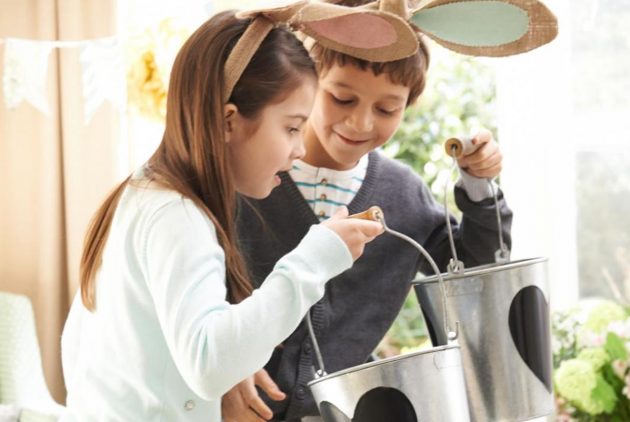Charlotte Mackaness shares the benefits of hard-won experience
The origins of the Easter egg hunt
What we think of as the Easter ‘bunny’ is thought to have its roots in 17th-century German folklore: children would leave nests in which a hare would leave eggs. (Read more on hare mythology here.) Hunting for chocolate eggs is a fairly recent Easter tradition. A well-organised egg hunt will live in a child’s memory for years but how do you hatch a plan that ensures Easter Sunday is not marred by tears and nausea by lunchtime? (Read more on the origins of Easter or Eostre here.)

Colour coding eggs for different children can help even up the field
Even up the Easter egg hunt playing field
Help ensure all children have a chance of equal spoils by colour-coding the eggs for each child and then make the hiding places more difficult to find or harder to reach depending on age. If the group is particularly large and there are not sufficient colours, try dividing the hunting area into zones (if space allows) and so everyone can have their own colour. Another way of giving younger hunters a helping hand is to pair them with an older child and task them with finding an egg of each colour. (Looking for luxurious Easter eggs? Find our suggestions here.)

Geocaching in the garden
Take your egg hunt to a new level – and perhaps buy the grown-ups a bit more quiet time – by having written clues. It is always good to start with something relatively simple, especially for small children who may lose heart and interest quickly. For example “Where you sit when in a tree, is where the chocolate eggs will be” could be a greenhouse. This treasure-hunt version works particularly well if the weather is inclement as it can focus the finders, hopefully ensuring the entire house isn’t ransacked.
Easy on the chocolate
There are lots of reasons why you may not wish to hide actual chocolate eggs, including unseasonably warm weather or worries about small people – or indeed the family dog – gorging themselves to ill effect. Tokens of some kind (Tiddlywink counters are ideal, especially if you’re going down the colour-coding route) can be exchanged at the end of the hunt for a treat, be that edible or otherwise.






